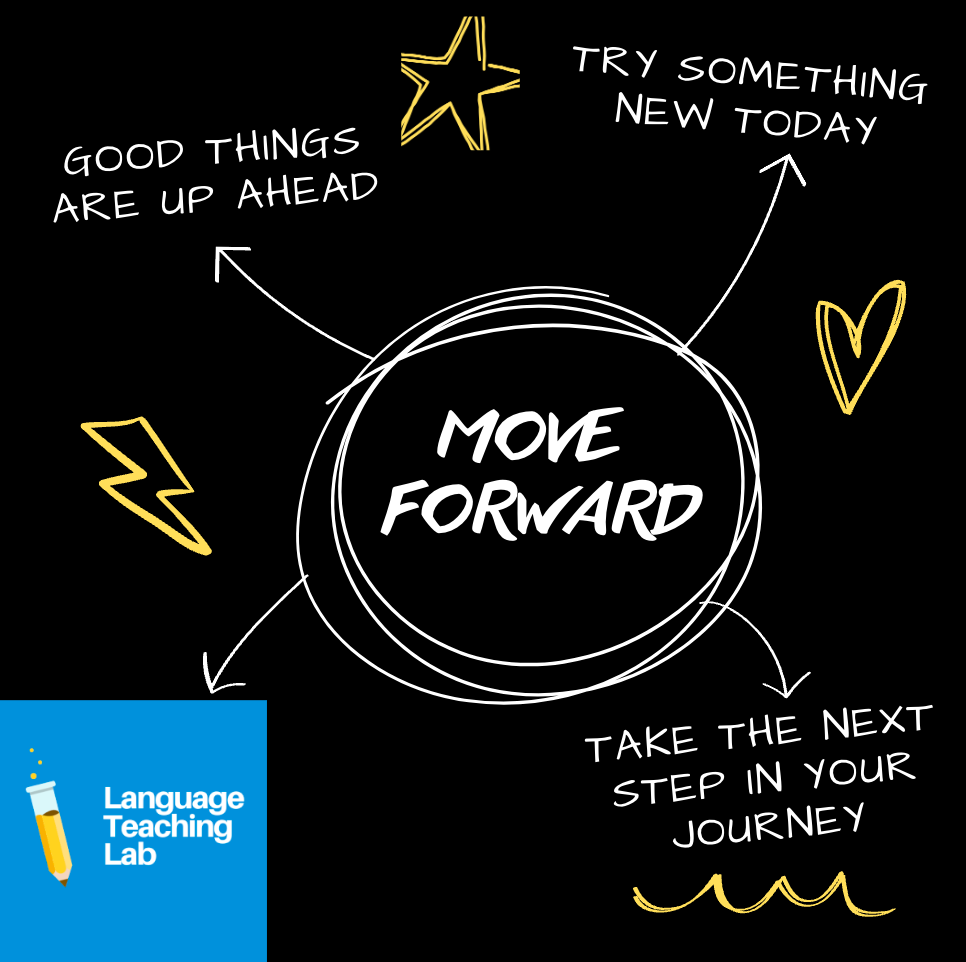
Move forward, the theme for the month, was inspired by a question I have been pondering a lot lately;
How might a proficiency-based curriculum approach help students move forward in their language acquisition?
There is a huge difference in an educational setting between noticing language and acquiring language once students have time to process it. Acquiring language is making it yours to use when communicating.
This first question inspired other questions.
How do you implement a proficiency-based approach in the language classroom? What type of questions should I/ we ask to develop students’ language proficiency to move forward?
A proficiency-based language approach has the objective to help students think and communicate ideas.
When answering questions, students demonstrate specific understandings, knowledge, and language skills that over time, reflect progress and the transition from one proficiency level to the next.
Teaching for proficiency starts by asking the right questions to help students develop communicative functions based on a context provided: describing, explaining, comparing, etc. It is about finding meaning and having a purpose to communicate what helps students to move forward in their language acquisition.
What is the data on the topic?
There is an array of data on proficiency-based language instruction. These are some worth- exploring resources:
- Path 2 Proficiency
- CARLA
- World Language Classroom
- We Teach Languages
- CAL
- Grahnforlang.com
- Participate Learning
- Asia Society
- Maris Hawkins
- Common ground
What lesson plan works best for implementing a proficiency-based language learning that help students move forward?
This is one lesson plan template I use for planning for proficiency. It helps to ask the right questions and plan accordingly. Use it and let me know if it helps.
What rubrics best align with a proficiency-based approach to language instruction?
Rubrics may be used for grading, giving feedback, self-assessment, and goal-setting. They can help students understand expectations and components of an assignment, become more aware of their learning process, and improve their work through timely and detailed feedback.
One possibility is the ‘single-point rubric’ as explained in the Cult of Pedagogy. Teachers can create the criteria to meet expectations for the assignment, provide feedback on areas for improvement, and have evidence of exceeding standards. The rubrics for World Languages from the Ohio Department of Education show examples of rubrics for each mode of communication. Organic World Language (OWL) also offers great rubrics to assess student proficiency in the language.
What do you do if your innovative teaching methods are met with resistance from students or other stakeholders?
Don’t give up!
Students need an authentic purpose for learning, relevant learning experiences, and a real audience. They also need to have these questions answered,
- Why is this important?
- How will I use it?
- How does this connect with something I already know?
When I read the book Innovate Inside the Box: Empowering Learners Through UDL and the Innovator’s Mindset it reminded me to center my teaching around those questions important to students. This book also inspired me to create and innovate within the constraints of the educational setting I am immersed in.
Other things that can be helpful if you feel there is resistance from students and other stakeholders are:
- Communicating the goals and benefits of using this approach
- Repeating the goals and benefits of a proficiency-based approach as needed and providing new ideas and examples
- Explaining the proficiency levels to students and showing them what it looks like in terms of language use
- Evaluating and re-evaluating students’ progress
- Inviting teachers to the classroom
- Understanding the perspective of other stakeholders
In the classroom, welcome questions, ask students for feedback, create a structure to support ambiguity, and help students become comfortable with the uncomfortable.
What would you recommend for a novice language teacher or anyone who would like to implement a proficiency-based approach to their language instruction? What workshops, classes, or online/onsite courses would help achieve their goals?
I highly recommend starting your journey by attending an Organic World Language training, either online or onsite, as a way of immersing yourself in the experience.
Other recommendations include becoming familiar with the Teacher Effectiveness for Language Learning Framework and taking the Avant Advance online teaching training,
Of course, attend state, regional, and national conferences for world language educators such as GWATFL, NECTFL, and ACTFL. Get involved in your local professional learning communities!
Students and teachers alike will move forward in the proficiency-based teaching and learning continuum.
